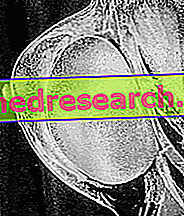Mammography and breast augmentation
Even for women who wear breast implants, mammography is the most effective tool for early diagnosis of breast cancer.
First of all, it should be emphasized that there is no correlation between prosthesis insertion and breast cancer.
There are some indirect risks, linked to the inexorable wear and tear phenomena to which prostheses go as time goes by.

What is certain is that modern prostheses are equipped with a double external membrane capable of preventing the leakage of material if the superficial layer is damaged.
However, the insertion or presence of breast implants can negatively influence diagnostic tests such as mammography and palpation.
In reality a lot depends on the type of prosthesis implanted and its location.
The most recent prostheses, for example, are radiolucent and can be freely traversed by X-rays without obscuring the underlying breast tissue. In these cases the diagnostic effectiveness is comparable to that carried out on a natural breast.
The older prostheses are instead formed by radiopaque polymers that reduce the explorability of the underlying tissues, hindering in some cases the early discovery of a breast carcinoma. In these situations the standard projections are not sufficient to fully investigate the mammary parenchyma and the diagnosis becomes more difficult.
The radiodensity of the prosthesis therefore depends on the type of material used and its physical characteristics. Before undergoing breast augmentation surgery, it is therefore useful to scrupulously examine the characteristics of the prosthetic material, requesting detailed information from the plastic surgeon who will perform the surgery.
Also the placement of the prosthesis heavily influences the diagnostic effectiveness of mammography. If the implant is inserted in a completely sub-muscular position (below the pectoral muscle) mammography does not require any special precautions and the radiologist will have no difficulty in carrying out his investigation.
On the contrary, if the prostheses are inserted in the sub-glandular position, ie positioned above the pectoral muscle, the mammographic survey will be less easy.
In any case it is necessary to inform the staff in advance before the beginning of the diagnostic procedures. In fact, there is a specific methodology which, in the case of subglandular implantation, requires more breast projections in order to examine the breast tissue in all its points.
This technique allows to obtain good results even if the prostheses are made of radiopaque materials. However, it is not free of contraindications since the greater number of scans carried out increases the dose of radiation absorbed. However, these are exposures well below the maximum limits that normally do not involve any risk for the patient.
It should also be considered that excessive pressure on the breast during the examination could potentially damage the prosthesis. Also for this reason it is advisable to apply to accredited centers, previously informing the radiologist about the presence of prostheses.
Finally, it should be remembered that the prosthetic material does not interfere in any way with other diagnostic tests such as ultrasound and MRI. This last technique offers greater reliability and represents the safest means for studying breast implants.
Breast augmentation and self-examination
Generally women with breast implants tend to ignore the presence of lymph nodes much more than the others, both for the fear of injuring the prosthesis and for the objective difficulty in distinguishing the breast tissue from the prosthetic one.
However, the plastic surgeon who performed the operation can provide useful information to help the patient identify any nodules.
One last tip
The analysis of the diagnostic effectiveness of mammography and self-examination in the presence of breast implants has repeatedly led us to emphasize the importance of choosing specialized centers and qualified personnel. It is therefore necessary to pay the utmost attention to the choice of structures and the staff involved in the intervention. It is a rule of wise behavior informasi beforehand, doubting who applies too low rates and asking for concrete reasons to those who apply too high.


